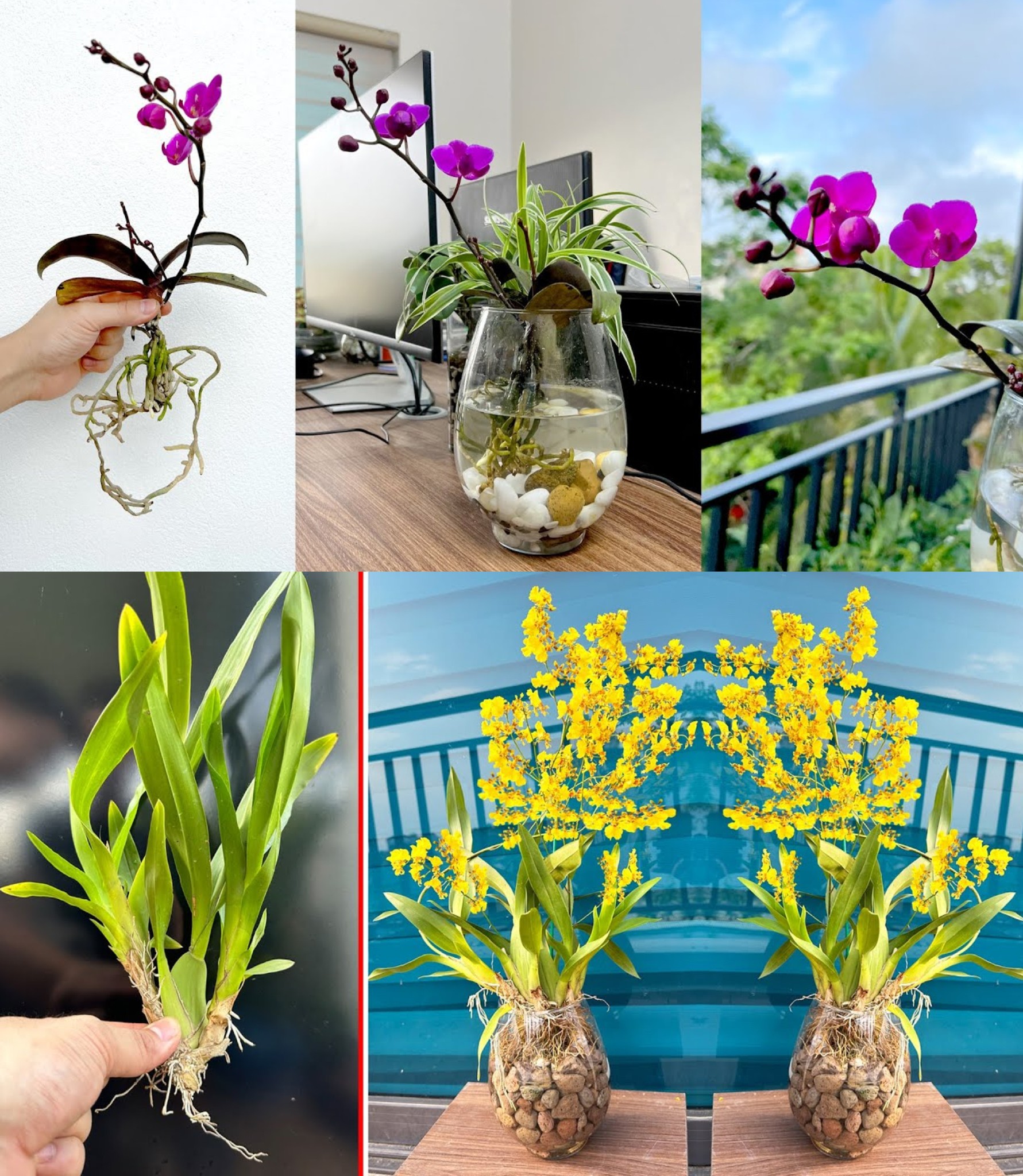Growing orchids in water can be a unique and beautiful way to decorate your home. While most orchids are typically grown in potting media, some can be successfully grown in water. Here’s a step-by-step guide on how to grow orchids in water:
- Select Suitable Orchid Varieties: Not all orchid species are suitable for growing in water. Some orchids, like the Phalaenopsis and Vanda orchids, are more adaptable to water culture. Research the specific orchid variety you want to grow to ensure it can thrive in water.
- Choose a Container: Select a clear glass or plastic container that is large enough to accommodate the orchid’s roots while allowing them to spread out. You can use a vase, glass jar, or any container with a narrow neck to help support the orchid’s stem.
- Prepare the Water: Use distilled or purified water to avoid mineral buildup. Fill the container with enough water to submerge the orchid’s roots. Make sure the water level is below the base of the stem to prevent rot.
- Add Fertilizer: Orchids grown in water require nutrients, as they won’t have access to nutrients in potting media. Use a balanced orchid fertilizer and dilute it to half the recommended strength. Add the diluted fertilizer to the water every 2-4 weeks during the growing season (spring and summer).
- Provide Adequate Light: Orchids need sufficient light to thrive. Place your water-grown orchid in a location with bright, indirect sunlight. Avoid direct sunlight, as it can overheat the water and harm the roots.
- Maintain Humidity: Orchids benefit from humidity levels between 40-60%. You can maintain humidity by misting the orchid’s leaves regularly or placing a tray of water with pebbles near the orchid.
- Monitor Water Quality: Check the water quality regularly to ensure it remains clean and free of algae or mold. Replace the water every 1-2 weeks or as needed to maintain water quality.
- Prune Dead Roots and Leaves: Periodically inspect your orchid for dead or rotting roots or leaves. Trim them using sterilized scissors or pruning shears to maintain the plant’s health.
- Repot When Necessary: Eventually, your orchid may outgrow its container or need a fresh start. If you notice overcrowded roots or declining health, consider repotting it in fresh water with a new container.
- Be Patient: Orchids are slow-growers, so be patient with the process. It may take some time before you see new growth or flowers.
Remember that growing orchids in water may not be suitable for all orchid varieties, and it might take some trial and error to find the best method for your specific orchid. Proper care, attention to water quality, and a suitable environment will help your orchid thrive and add beauty to your home.
